getRealism
Want to create realism in art? You've come to the right place.
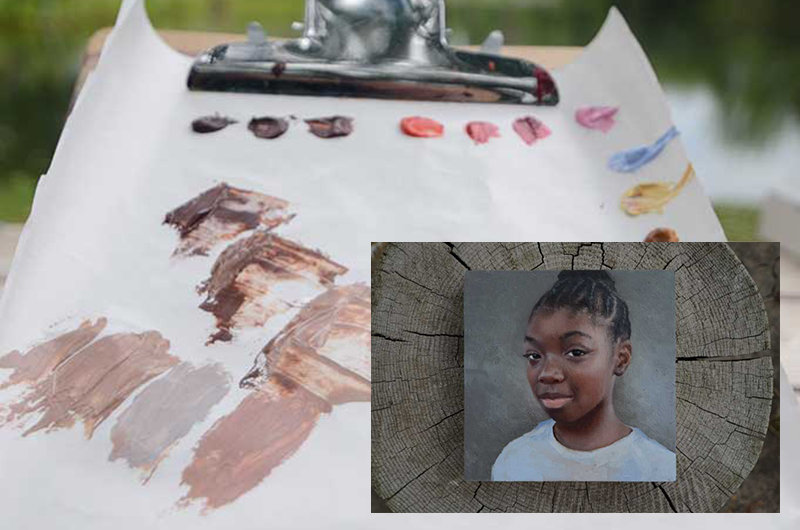
Skin Tone Oil Paint
When it comes to mixing oil paint skin tones, there's no single recipe. There are many ways to achieve believable skin tones in oil. I've deconstructed how I learned to paint, sharing my observations on mixing oil paint for lifelike skin tones. The process involves blending warm and cool colors in varying shades. Just follow the simple steps below for mixing skin tone oil paint.
Follow These Easy Steps For Mixing Oil Paint Skin Tones & Flesh Colors
Painting skin tones in oil requires mixing paint. Making a variety of warm and cool colors in different shades ranging from dark to pale.
How To Mix A Skin Tone Oil Paint
- Start by mixing a skin tone base color
- Separate this base color into 2 parts
- Add white to one pile to create a mid-tone
- Separate the mid-tone into 2 parts
- Add more white to yield a lighter shade
- Separate again into smaller sections
- Add yellow to create warmer flesh tones
- Add blue or purple to create cooler flesh tones
- Add red or pink to create rosy pink tones
Start By Mixing A Good Skin Tone Base Color
The base color will vary. It varies for each model and light source.
I like to start with a neutral base color. Reserve the most saturated colors for the fully lit areas and those that turn pink when a person gets cold or blushes.
I like to begin painting a portrait with a mix of Iron Violet and Rust Red. This creates a dark base color.
Separate The Base Color Into 2 Parts
Divide the dark base color into equal parts. Leave one pile dark for the shadows.
Add White To Create Mid-Tones
Mix white paint, like Flake White Replacement, into one pile to form a medium-toned skin color similar in value to the mid-tones seen in the subject.
Separate The Mid-Tone Into 2 Parts
Divide this medium-toned oil paint mixture into equal parts.
Lighten To Create Lightest Shades & Highlights
Add more white to one section create colors for lights and highlights.
Further Divide Paint Into Small Sections
Further, divide the paint pile into smaller sections to create warm tones and cool tones.
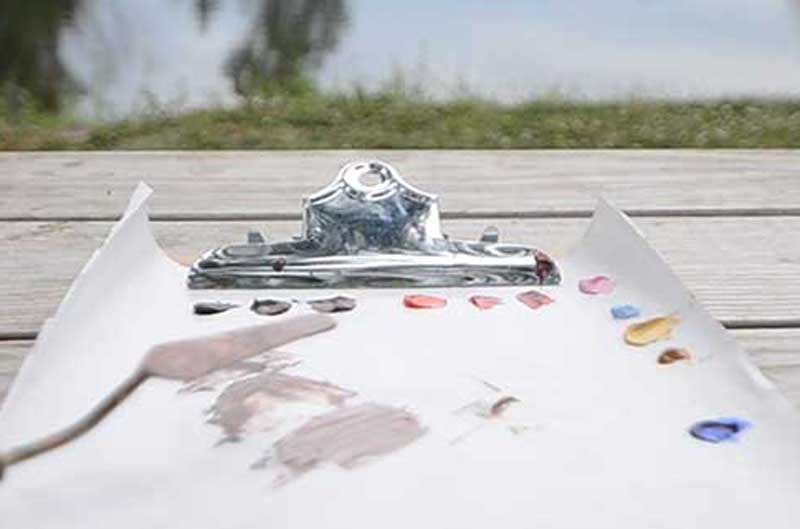
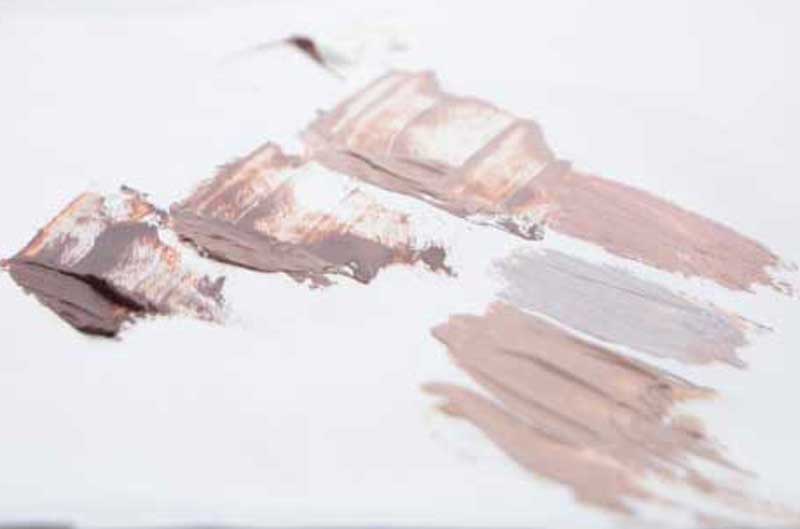
Adjust The Color Temperature
Add a small amount of yellow to create a warmer tone, blue to make a cooler tone, and pink for a rosier tone flesh color.
This is a simple skin tone oil paint mixture. Adding colors like Yellow Ochre or Naples Yellow will warm up the lights. Colors like Radiant Blue or French Ultramarine Blue can help to cool the mixture.
Painting Skin Tones In Oil Paint
Use the darkest base color for the shadows. Use the lighter shades for the mid-tones and highlights. Adding touches of warm and cool paint colors will delicately tweak the flesh color as you paint.
Mixing Oil Paint Skin Tones:
There are several ways to achieve believable skin tones in oil. Here are 3 of my favorite color combinations.
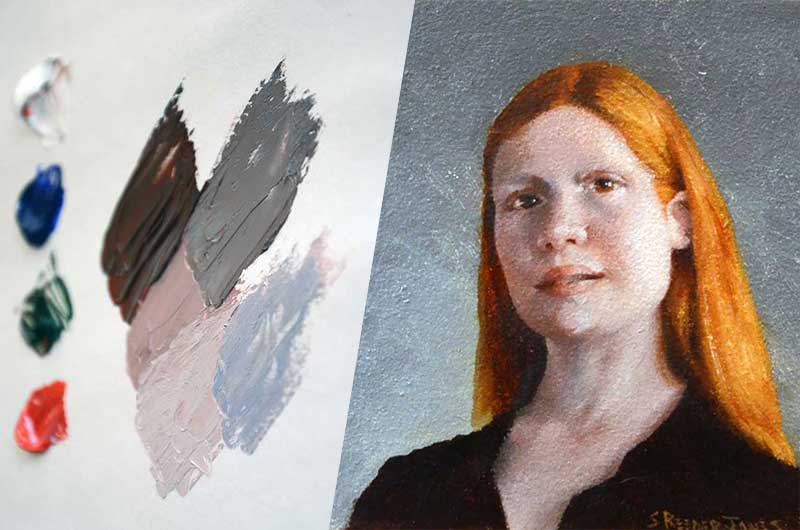
- Cadmium Red Light
- Terra Verde
- French Ultramarine Blue
- Flake White Replacement
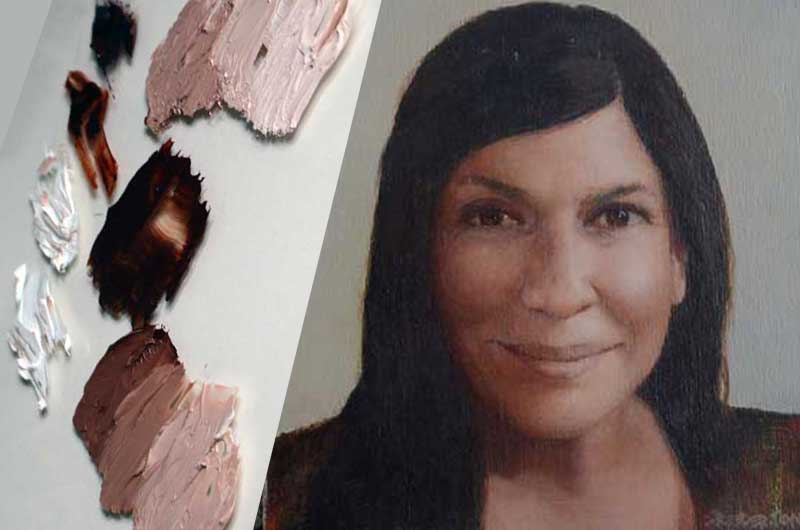
- Gamblin's Iron Violet
- Gamblin's Rust Red
- Flake White Replacement
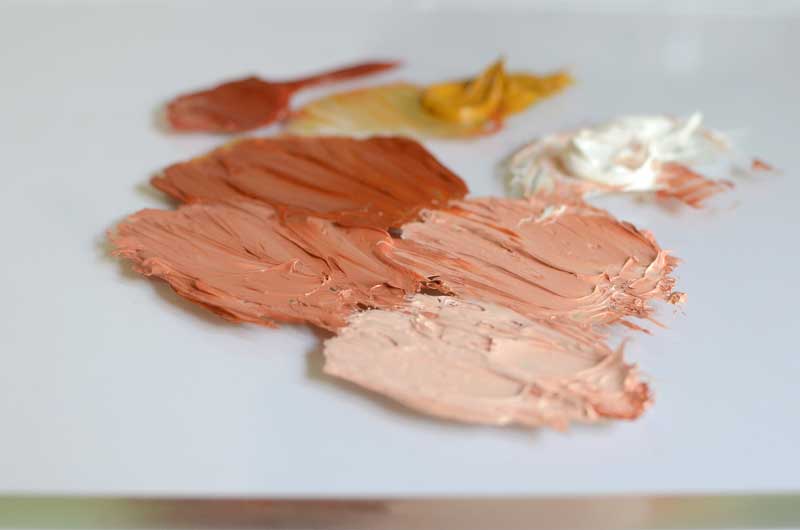
- Venetian Red
- Yellow Ochre
- Flake White Replacement
Add small touches of yellow, blue, pink and red as necessary to adjust the color temperature.
Mix paint colors similar to the model's flesh colors. Then warm or cool the flesh color by incorporating small amounts of other colors.
Additional paint colors include Naples Yellow, Cadmium Red, Permanent Rose, French Ultramarine Blue, Gamblin Radiant Blue, and Gamblin Radiant Pink.
In my observations, I believe skin tones in oil are primarily made of reds, yellows, browns, blues, greens, and purples.
Paint What You See
To learn how to paint various skin tones, you must learn to paint what you see. You may want to choose different paint colors for a person with fair skin compared to a person with darker skin.
Learn To See Undertones
If you want to paint a believable skin tone, you must learn how to see color temperature.
People have different colored undertones in their skin. This is why cosmetics are made in a wide range of tints in both warm and cool tones.
Consider the color temperature of the light source. Warm light illuminating your model will require a warmer paint mixture. Cool-colored lighting will likely require touches of blue.
Here's a rule that's helpful when painting skin tones.
If the light hitting your model is warm or yellow, the shadow colors should be cool in color, containing blues or purples. On the other hand, if the light is cool or bluer, the shadows will likely appear warm in color.
I'm sure there are exceptions to this rule, but it's a good guideline to follow when choosing paint colors for mixing skin tones.
Adjust Color Often
Skin tones have many color changes. Be prepared to adjust the paint color often as you move across the form. This means adding small touches of a different color to the paint mix.
This varying color should probably happen as often as every half inch. Areas of one solid color will appear to be flat. Subtle changes in color help to make an object look 3D.
Conclusion:
In conclusion, there are many different methods and color combinations for mixing flesh-tone oil paint.
It's important to understand color temperature and value in creating realistic skin tones. I suggest laying out the paint colors that you currently have. You likely have a suitable combination.
Experiment by mixing different color combinations. To avoid muddying the color, limit your mixes to a maximum of three paint colors at a time.
Use photo references as you experiment to help achieve the desired skin tone.
Once you've created a base color that closely matches your model's skin tone, add white to create a mid-tone. For a warmer hue, lighten the base color with a light yellow instead of white, and for a cooler hue, use a light blue.
Adding a touch of Cadmium Red will create a warm pink skin tone, while a small amount of Permanent Rose will transform the base color into a cool pink tone.
Realistic skin tones consist of a variety of warm and cool hues that change subtly as light interacts with the face or figure.
There is no single recipe for skin tone oil paint. Just like painting anything else, it's best to paint what you see. I've outlined 3 of my favorite color combinations hoping that you will find these basics for painting skin tones helpful.
Author: Sonia Reeder-Jones